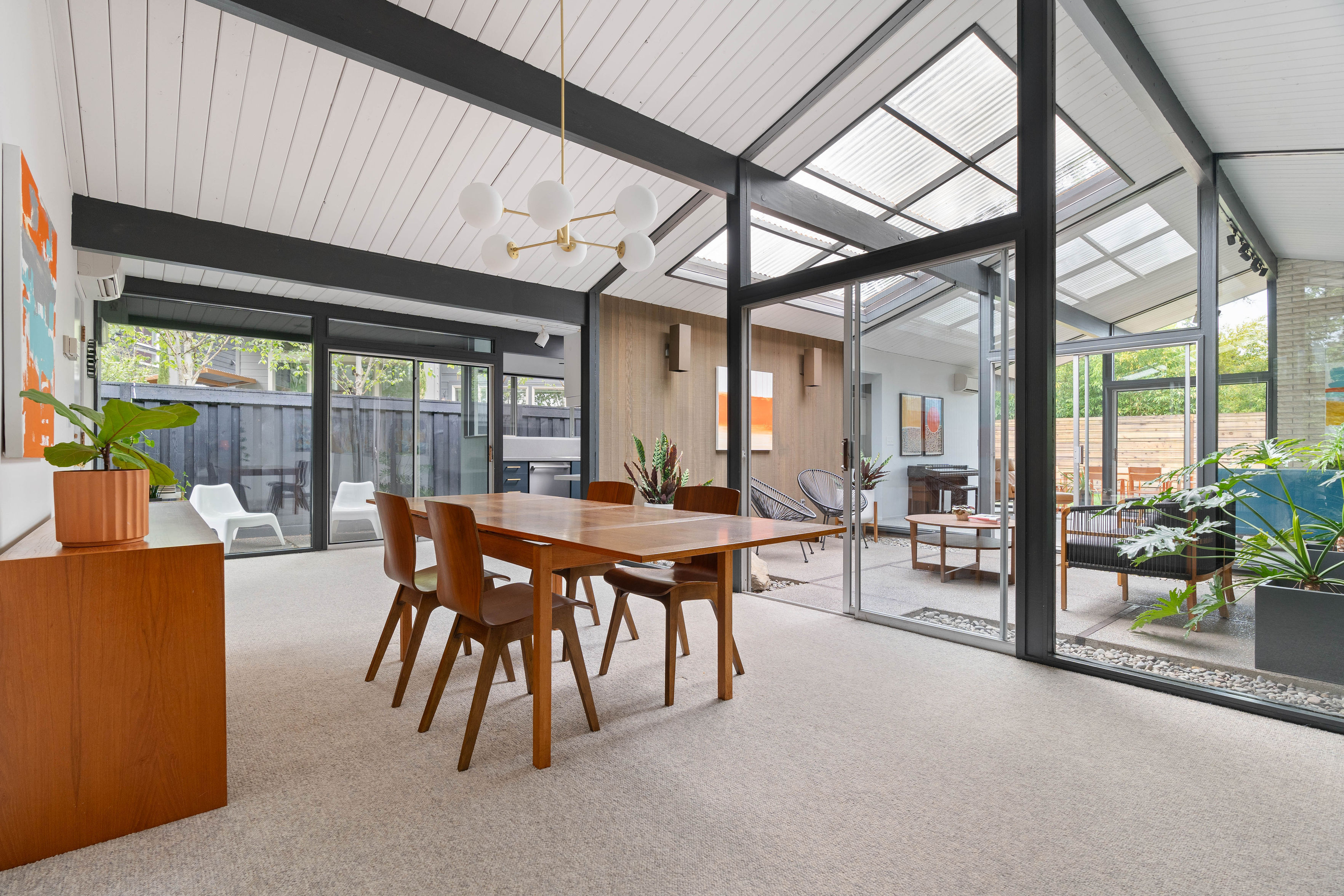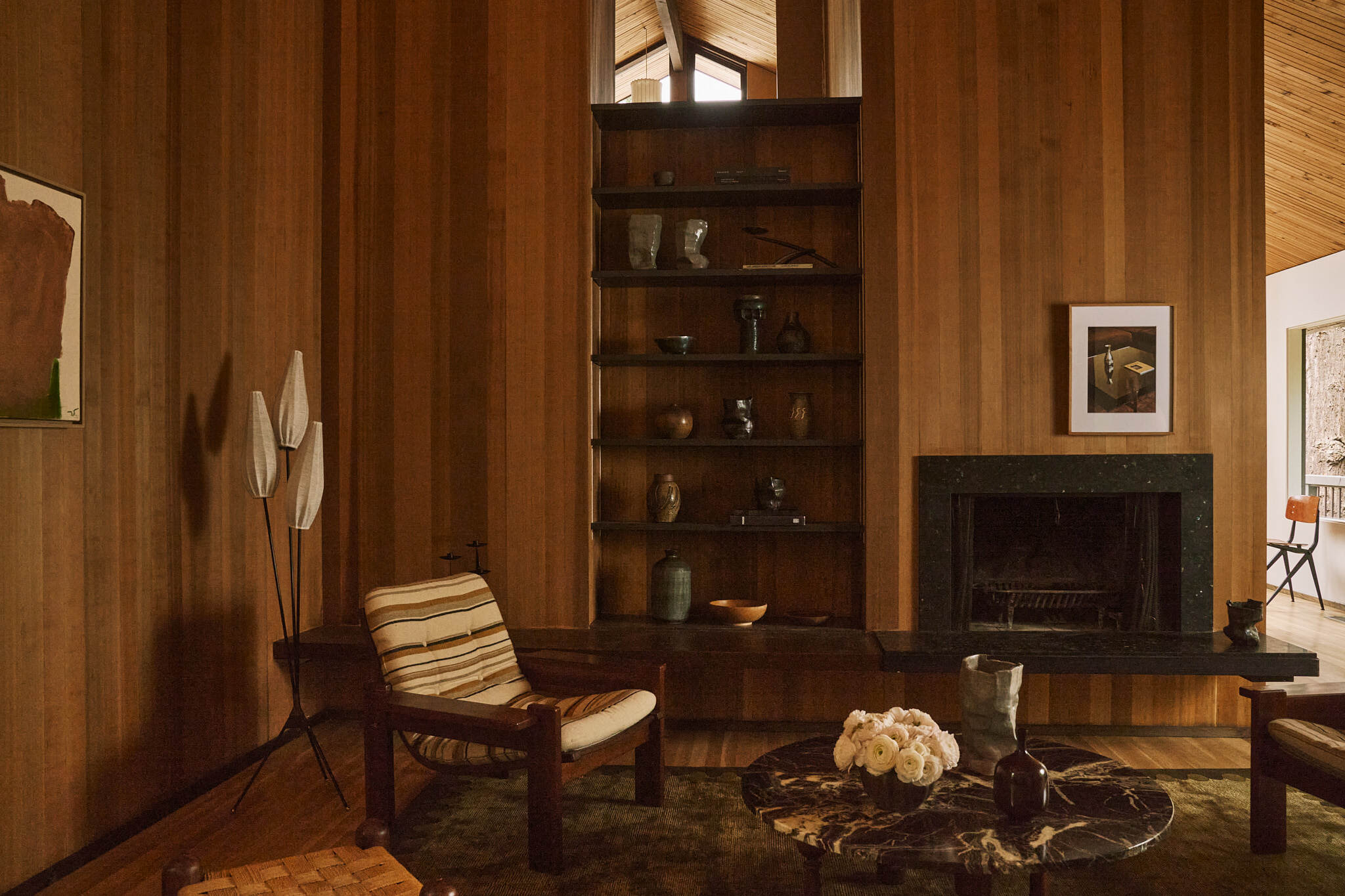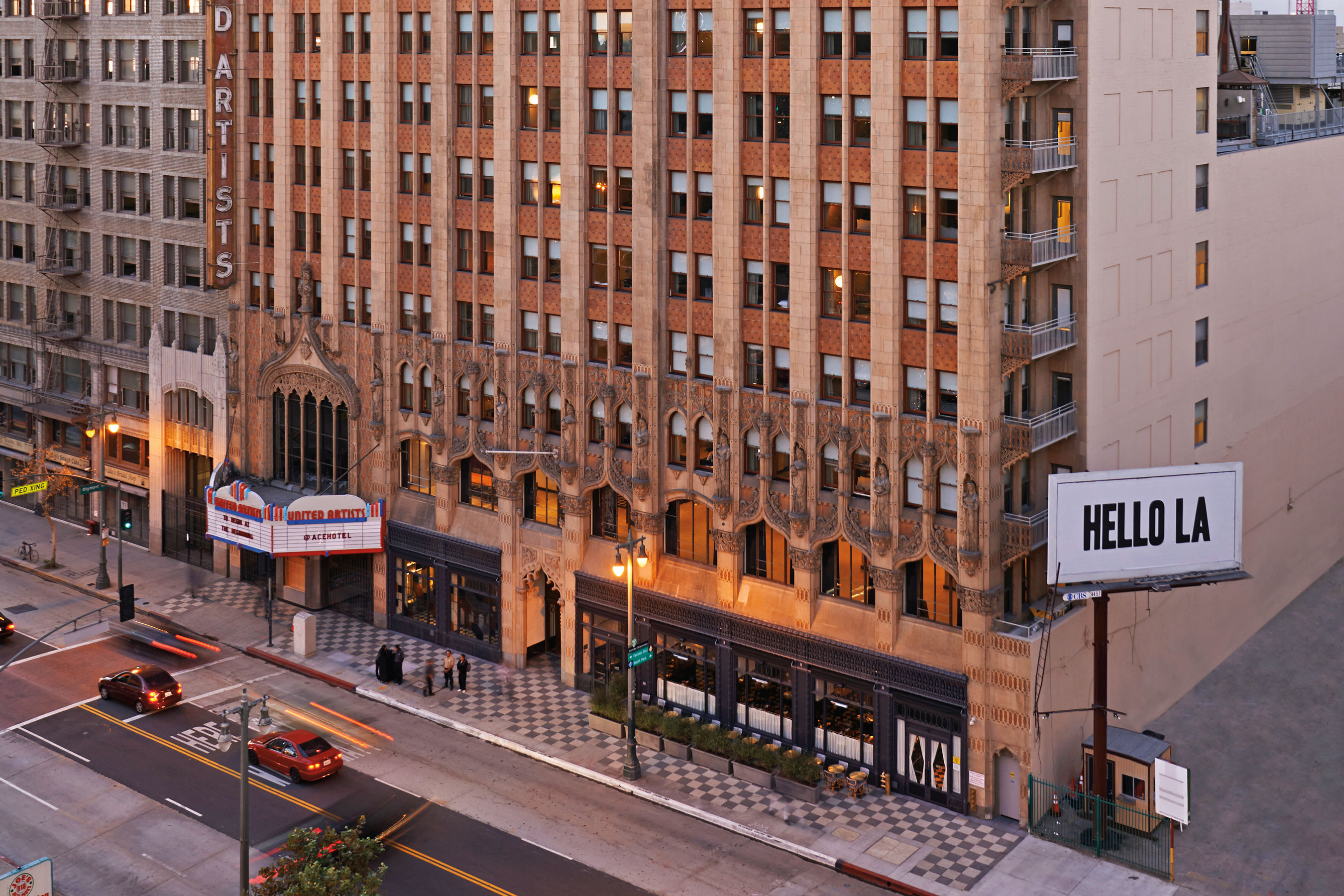
How Ace Changed the International Hotel Design Game
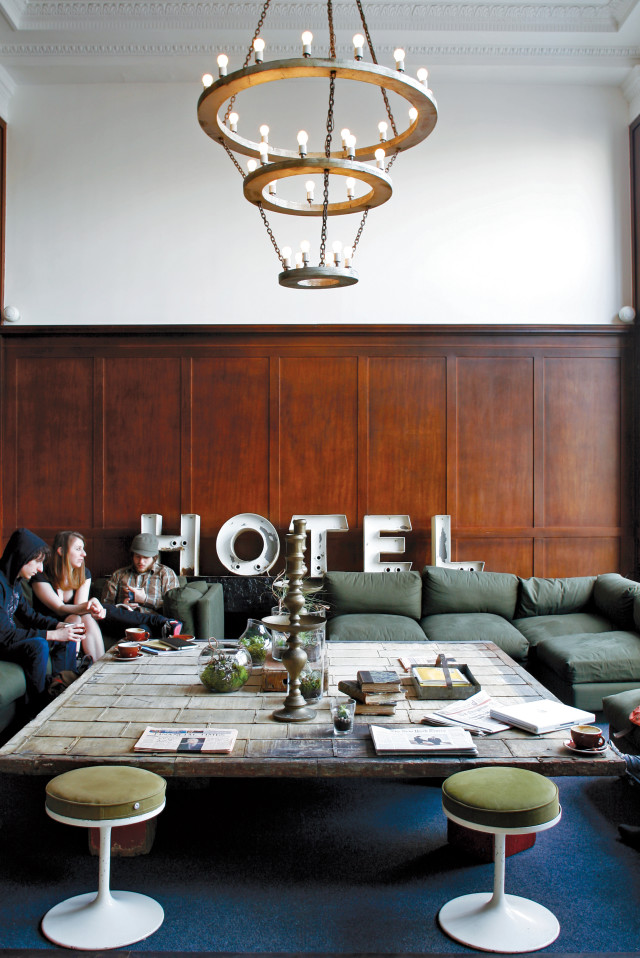
The lobby of Portland’s Ace.
Image: Ace
Last March, as I strolled a quiet corner of the Ace Hotel and Swim Club in Palm Springs in the desert heat, I looked down to find “Harold + Maude” carved into a ragged heart in the concrete. I smiled at this faux-vandalistic tribute to a cult ’70s movie, a tribute many guests would never see. Earnest but faintly ironic, the textural touch felt nonchalant yet intentional—and thus, so very, very Ace.
At the Ace brand’s seven hotels, scattered from Seattle to Panama to London, design comes in gestures grand and small, and often doesn’t feel like “design” at all. The Palm Springs compound, created in 2009 by ferociously whitewashing a defunct Howard Johnson’s, shimmers against the Martian backdrop of the San Jacinto Mountains. Ceramic-tiled outdoor fire-places by iconic midcentury sculptor Stan Bitters tower over the walkways. Designer Michael Schmidt, who has dressed the world’s Gagas and Rihannas, draped the lobby in a rambunctious “desert nautical” rope installation. Even so, the place feels less design-y “boutique hotel,” more spaced-out salon hosted by some raffish desert bohemian. A stuffed coyote in costume jewelry watches over a tattooed international set that comes—children often in tow—to bask by two pools.
Ace, like all aspirational hotel brands, tries to wrap every visitor in a temporary fantasy. Across its select but global geography, the company pursues that goal with different strategies but an inimitable style. In New York, the Midtown Ace’s retro-opulent lobby became the city’s “trendiest place to work.” In Los Angeles, the company revived a forgotten-but-spectacular downtown movie palace. The Portland Ace, as many here know well, embodies cozy analog intimacy, every bed swaddled in a Pendleton blanket emblazoned with an elk.
In each case, the company’s designers extract a carefully chosen strain of urban identity and distill. For travelers interested in indie culture, music, food, and art, Ace excels at creating hotels that somehow seem more like their respective cities than the cities themselves.

The Palm Springs lobby.
Image: Ace
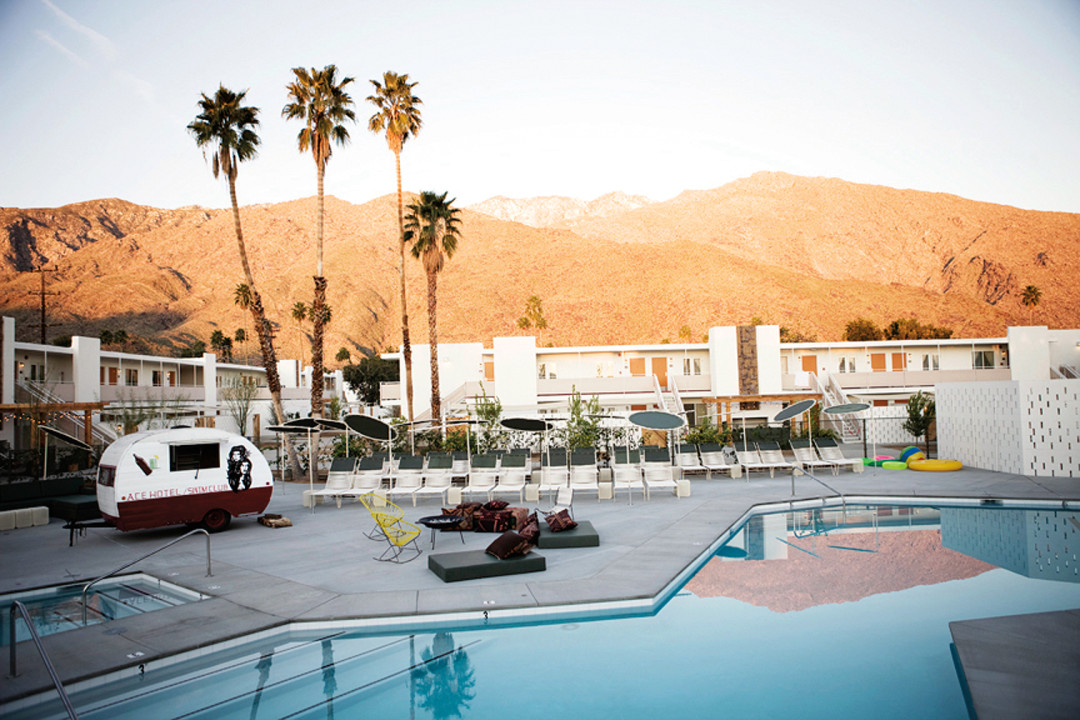
One of two Palm Springs pools.
Image: Ace
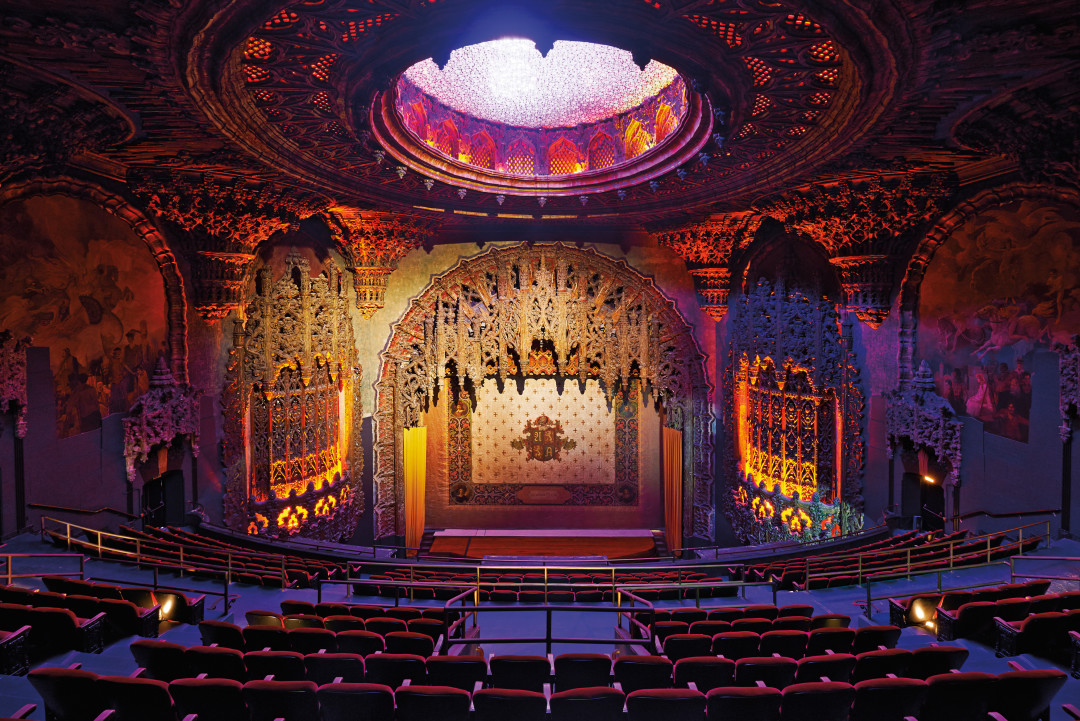
The theater at Ace LA.
Image: Ace
Ace began in Seattle in 1999, but since 2006 Portland has served as the company’s design headquarters. Atelier Ace, the in-house creative department, makes its home in a somewhat frazzled, almost unmarked brick building in Chinatown, where a team of architects, interior designers, graphic designers, and copywriters work in humble, skylit offices. One room, the office of “chief cultural engineer” Ryan Bukstein, is littered with music gear, from guitar amps to a dusty vintage piano.
“We spend a lot of time here,” says Bukstein, a 35-year-old who began working with Ace founder Alex Calderwood in 2000. “For us, it was always, ‘Why are we here?’ Because we like it here. ‘Why are we doing this job?’ Because we like this job. No one working with us is doing it for any other reason.”
The spirit of Calderwood, who died in 2013 at the age of 47 after repeated battles with addiction, still suffuses Ace’s design philosophy. A streetwise former Seattle concert promoter, Calderwood was a cultural “curator” long before the term became ubiquitous. After launching Ace as a minimalist haute crash pad in an old Seattle dockworkers’ hostel, Calderwood and a shifting cast of business partners and loyal employees grew at a deliberate pace, first in 2006 when the former Clyde Hotel on downtown’s Stark Street became the Portland Ace. In turn, a once-gritty gay neighborhood became the reinvented West End, full of boutique retail and Japanese tourists. The project rooted Atelier Ace here, as the creative engine of Ace’s slow but steady expansion. Palm Springs, New York, London, Panama City, Los Angeles: in each case, a certain Ace formula—or, maybe it would be more fair to say, sensibility—came into play.
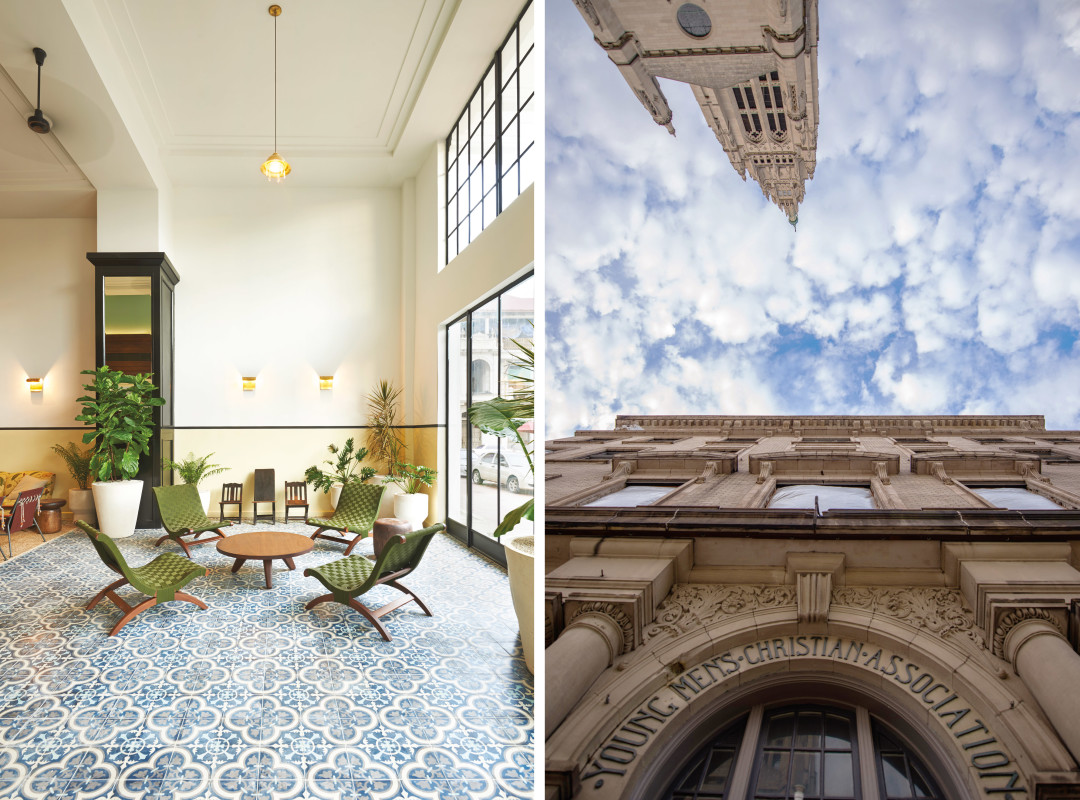
Ace’s American Trade Hotel in Panama City; the Pittsburgh YMCA becoming an Ace this year.
Image: Ace
The company resuscitates buildings that may or may not be historic, but definitely lack love. (In London, for example, Ace renovated a generic, decade-old Crowne Plaza.) It seeks neighborhoods ready for reboot. (The Panama City property, branded as the American Trade Hotel, is in Casco Viejo, a long-neglected, 400-year-old UNESCO World Heritage district.) Ace then scours the local scene for collaborators and seeks out design ideas with an eclectic intensity that Bukstein and others trace back to Calderwood.
“Alex would find design inspiration in anything,” says Eric Cheong, a SCI-Arc-trained architect who joined Atelier from the upscale New York design firm Roman and Williams. “He could pick up these really banal moments and use them as influences.”
That philosophy can mean high-profile partnerships, like acclaimed designer Max Lamb’s metal-clad lobby bar in London. But it also translates into low-key (and often low-budget) details, as with Portland signage created by a longtime Oregon metal-stamping firm. Each Ace thus becomes a hodgepodge of contributors and influences. The brand is at once unmistakable and engagingly all over the place.
“We don’t go for a uniform look or sensibility,” says Kelly Sawdon, Ace’s chief brand officer. “London and LA were designed at the same time but are totally different. It’s about being ourselves in a specific building.”
The path to this—call it self-actualization?—sounds, in the Ace team’s description, decidedly intuitive. Cheong, often at the forefront of scouting potential new properties, says: “I fly to cities once or twice a month, looking at old buildings, walking around with local developers. A lot of time it’s the people we meet—developers doing what we like people to do, which is to look at neighborhoods that need some kind of catalyst that will stabilize that part of the city.”
“We start with the history of the building, the neighborhood, the city,” Sawdon adds. “But it’s not about re-creating a historical ambience. It’s about evoking something essential and authentic. In New York, there were beautiful mosaic tile floors, but they had big sections of tile missing. We’re not going to re-create that—we’re not going to go match that tile. Instead, we fill in the gaps with smooth concrete. You keep the original patina but also add a sense of history unfolding, of one era giving way to the next.”
Portland seems to serve as a touchstone—small as a market, compared to London, New York, and LA, large in Ace’s collective spirit. “There’s a modesty that comes from the Pacific Northwest,” Cheong says. “There’s an ease of collaboration, this West Coast side of things that’s not California. There are ties to Asia and Native American culture. Beauty, craft, nature—a sense of history, but less politically driven and more culturally driven than the East Coast.”
To Cheong, ineffable Portland culture gets exported in forms philosophical and specific. “London was our most collaborative hotel in terms of regional artists, food, and beverage,” he says, “all key ideologies that come from the Pacific Northwest. In Palm Springs, we used a lot of painted CMU and old, raw military canvas—materials that would not generally be seen in a hospitality environment. But we were able to create this really relaxed environment that reflects the desert.”
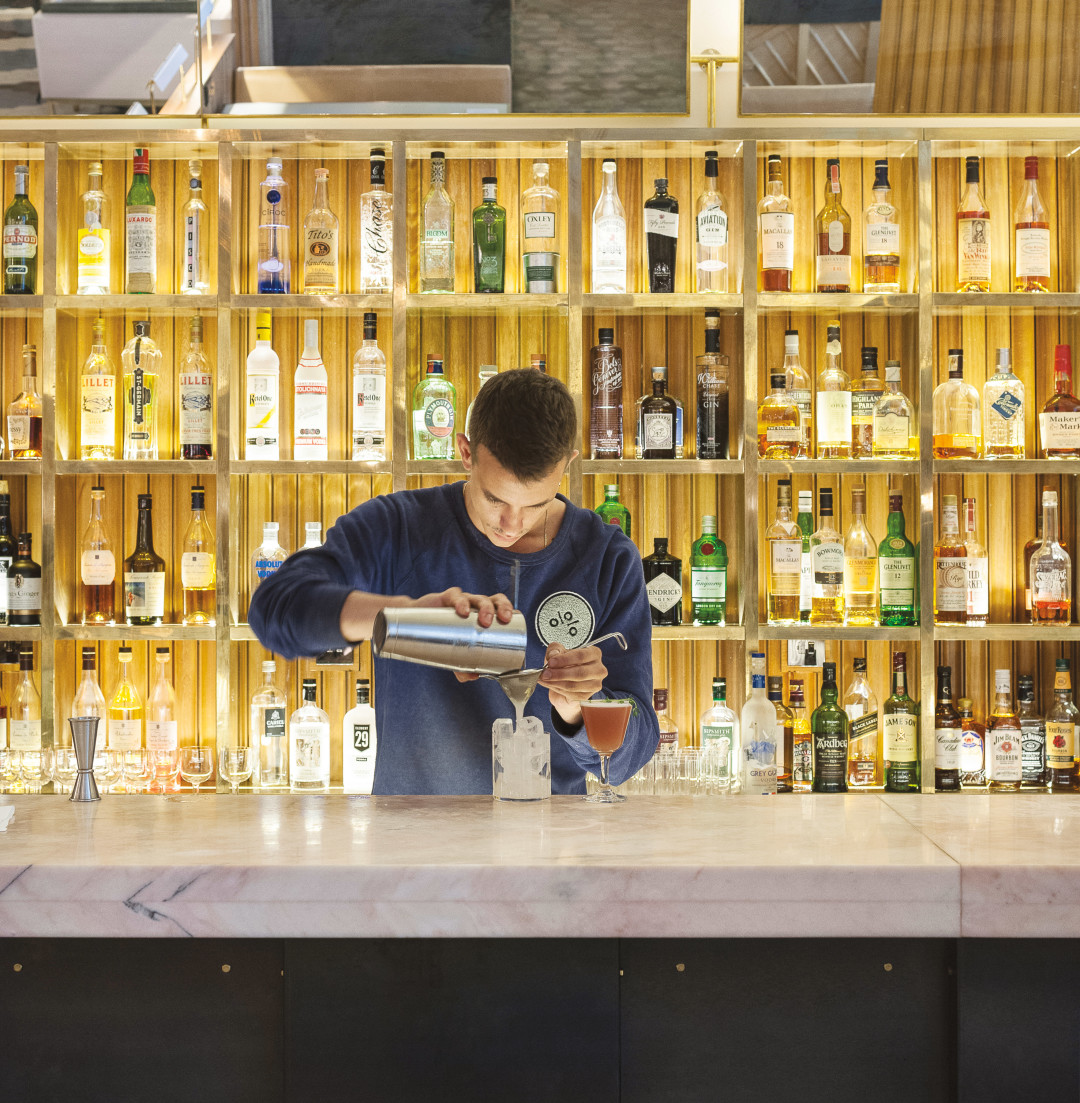
Scenes from the Ace Hotel in London, opened last year in the East End neighborhood of Shoreditch.
Image: Ace
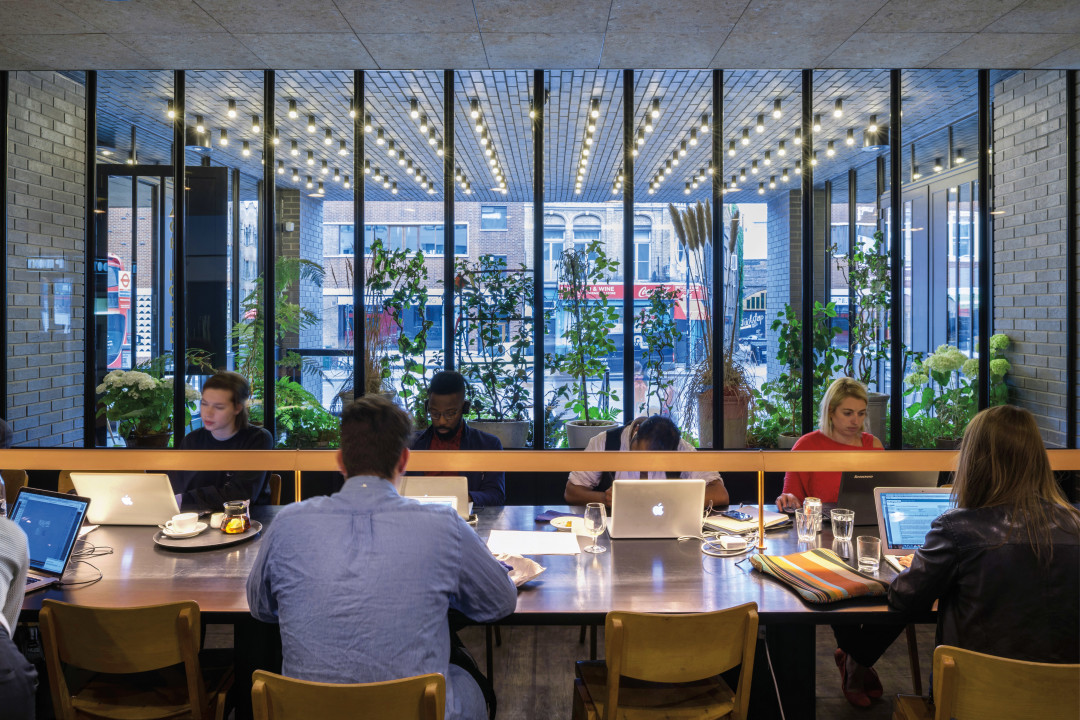
Image: Ace
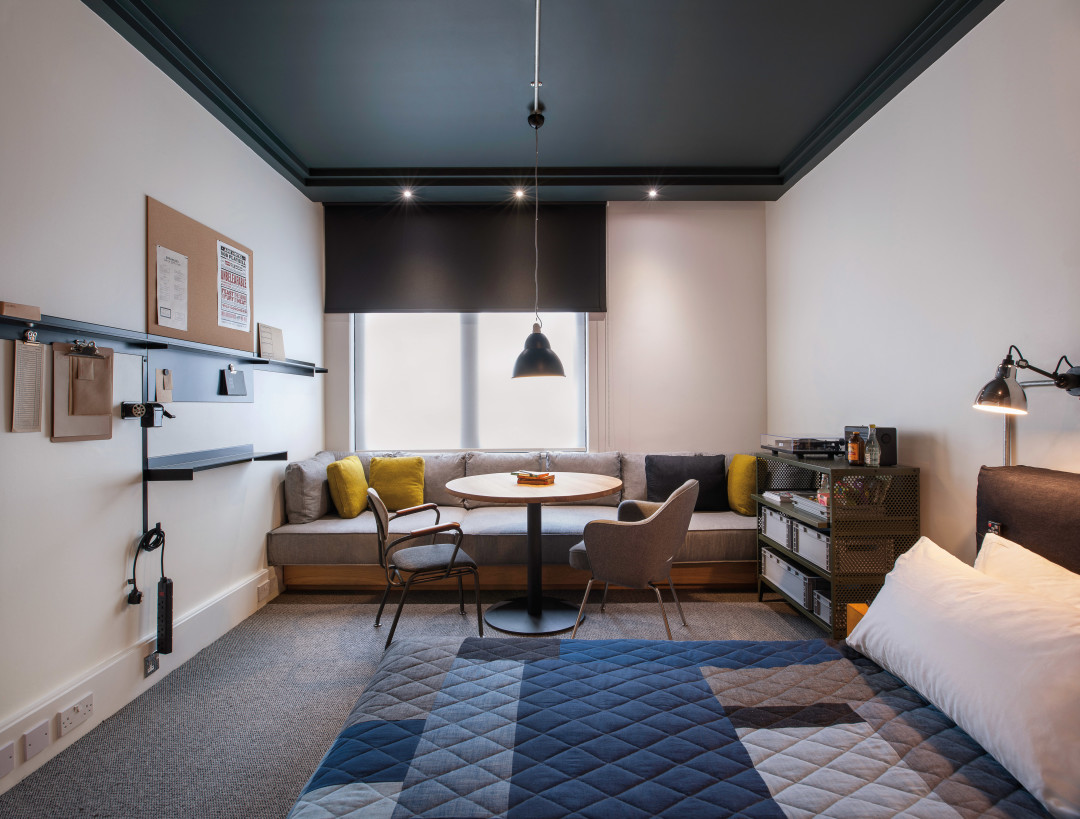
Image: Ace
Ace’s seven properties barely register as a statistic within the $6 billion annual boutique lodging business. The brand, however, is more influential than size would suggest. “They are seen as spearheading a new path in the industry,” says Sean Hennessey, an assistant professor at New York University’s Tisch Center for Hospitality and Tourism. “There’s a market for a younger, more informal, stylized hotel, and they’re the embodiment of that market. And you can look at anything they do, from their website to any of their public spaces, and say, ‘That’s Ace. That’s not anyone else.’ There aren’t many brands you can say that about.” Recently, a number of competitors have unveiled vaguely Ace-esque concepts, like Chicago’s retro-indie Acme or Hilton’s Canopy properties, which will debut this year as a brand that emphasizes local cred.
“We try to avoid paying too much attention,” Sawdon says, her sangfroid on-brand.
By the end of this year, a new Ace will open in Pittsburgh, Pennsylvania, in the revitalizing East Liberty neighborhood. (The company also recently announced a 234-room New Orleans hotel, slated for fall 2016.) The company is making over an imposing old YMCA, a setting that has designers pondering Pittsburgh’s heritage as a sports-obsessed Rust Belt town reinventing itself as an innovation hub. The Atelier team envisions the property’s centerpiece, the old Y’s large gym, as a venue for everything from music to robotics demonstrations. “There are so many smart young people in Pittsburgh,” Cheong says, “and a really interesting scene that’s not a traditional tech scene—it’s an experimental arts-and-science scene.” With most of the creative work being done in Portland, the brand’s latest effort seems likely to be another crucible of the new bubbling within the old.
“When we came to Portland, it was our first time coming in with open eyes and a real sense of adventure,” Bukstein recalls, “and Pittsburgh represents a unique opportunity to do it on a similar scale.”
After seeing “Harold + Maude,” I headed for the main Ace pool deck. When my family first arrived at the hotel, we received a room at the edge of the property, distressingly close to a busy road and reality in general. We requested a new one, deeper inside the compound, and now I was immersed in the meticulously off-the-cuff world created here by Atelier Ace, and the rest of this small but potent brand.
Does Ace design with a target market in mind? Yes. And why not? If you just want a bed to sleep in, there’s always Best Western.
